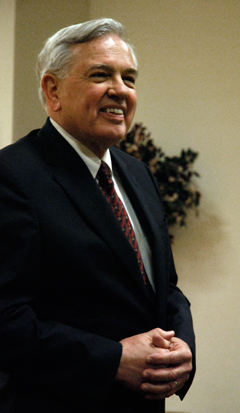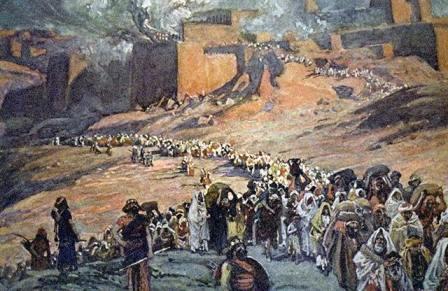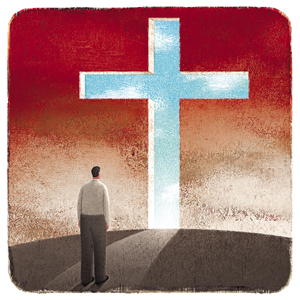Home | About Us | Directions | Bulletins | Sermons & Audio | Cross Of Christ Studies | Classes | Student and Parent Resource Page | Dangers Facing the "Non-Traditional"
Click Here for the Latest Edition of the Auburn Beacon

The Beacon is sent weekly

Hear Buddy Payne
Speak in Auburn, Alabama
All Joy and Peace in Believing
![]()
![]()
Our God He is Alive
(Evidences from DNA)
![]()
![]()

The Final Stages of Israel's Apostasy
Adult
Bible Class in Progress - Sunday
Morning 9:30 - Auditorium Class
Planning to Visit Us?
What
to Expect
Current Class
Information
Thoughts To Ponder
And
now why are
you waiting? Arise
and be baptized,
and wash away your sins, calling on the name of the Lord.
-
Acts 22:16
You will need
the following viewers
to view many of the
files on this site.
![]()
Click here to
download
Adobe Acrobat Reader
![]()
Click here to
download
Microsoft PowerPoint Viewer
University church of Christ
Assembly Times
Sunday
Bible Classes (9:30)
AM Worship (10:20)
PM Worship (6:00 pm)
Wednesday
Bible
Classes
(7:00 PM)
Location
449 North Gay Street
Auburn, AL 36830
Click Here for Specific
Directions
The Origin of the Sinner's Prayer
by Ryan Hasty
No method of conversion has gained such popularity amongst mainstream denominations in the last century than that of the “Sinner’s Prayer”. It has been said that thousands of people utter this prayer daily in response to alter calls and one-on-one conversations between friends, relatives, co-workers, and school mates. To find the origin of this method of conversion, one must rely on extra-biblical evidence as neither the term “sinner’s prayer” nor the concept can be found in God’s holy word.
The beginning of this conversion method has its foundation in the middle 18th century as the First Great Awakening was underway. It was in 1741 that a preacher named Eleazar Wheelock devised a technique called the “Mourner’s Seat” by which to draw the penitent believer. Wheelock would target sinners by having them sit in the front pew while pronouncing from the pulpit “salvation is looming over your heads.” Not only were these individuals susceptible to further counsel, they were vulnerable to whatever method of conversion Wheelock prescribed. False conversions from his revivals were numerous though it took almost a hundred years for other preachers to begin mimicking his process.
In 1801, the “Cane Ridge Revival” began in Kentucky and lasted for several weeks. The temperature outside was so hot and attendees endured such long periods without food that many became delirious and began rolling around in the aisles and barking like dogs. Such an abuse of the emotions by the preachers at this revival gave thousands of individuals a mistaken notion about their rebirth. Some ministers such as J. V. Coombs rightfully condemned such behavior as a mockery to Christianity. However, other ministers caught on to the fact that gospel preaching could be modified to manipulate the emotions of the listeners into “conversion”. Others in pews around the country placed unreasonable expectations on preachers to produce the same “religious experience” that was found at the Cane Ridge Revival.
It wasn’t until 1835 that another preacher named Charles Finney emerged on the scene to develop a hybrid system of conversion by combining Wheelock’s “Mourner’s Seat” with the experience of the Cane Ridge Revival. This traveling preacher named his technique the “Anxious Seat” and developed an entire theological system around it. The practice was essentially a psychological technique in that it manipulated people's emotions to make a tearful profession of faith without a true conversion. Its success was entirely dependent upon the ability of the preacher to stir up his audience's emotions. Finney did not attempt to hide his confidence in this man-made system when he stated, “The church has always felt it necessary to have something of this kind to answer this very purpose. In the days of the apostles, baptism answered this purpose. The gospel was preached to the people, and then all those who were willing to be on the side of Christ, were called out to be baptized. It held the place that the anxious seat does now as a public manifestation of their determination to be Christians.”
In the 1860s, the concept of the “Anxious Seat” was modified further by a preacher named Dwight Moody. Moody’s method was named the “Inquiry Room”. Moody utilized the same psychological techniques that preyed on emotions, but in addition asked those who responded to his teaching to join him and his trained counselors in another room. In this “Inquiry Room”, questions were asked, certain scriptures were read, and then Moody and/or his counselors would pray with the potential converts. Moody considered prayer to be the last step in the conversion process. A man named R. A. Torrey succeeded Moody in 1899 and he modified Moody’s system by taking the “room” out of the equation and performing “on the spot” street conversions. Torrey’s method of conversion made popular instant salvation with no strings attached.
In the early 1900s, well known baseball player Bill Sunday had a conversion experience in Moody’s Chicago mission and therefore left the diamond to pursue preaching. Sunday was one of the most popular, charismatic, and entertaining speakers of his generation. He used various antics, showmanship, and humor to stir up the emotions of his listeners. Sunday preached that one could be saved simply by walking down his tent’s “sawdust trail” to the front where he was standing. Later on, people were said to have received salvation simply by publically shaking Sunday’s hand and stating that they would follow Christ.
Finally in the 1940s, the next big crusade preacher hit the scene. A young man named Bill Graham trained counselors to encourage those who responded to his “altar call” to pray that Jesus would come into their heart. This concept of praying for your salvation came from a tract Graham developed called “Four Steps to Peace with God” which merely originated from another tract 50 years prior called “Four Things God Wants You to Know.” In the 1950s, Bill Bright took this concept and coined the expression, “The Four Spiritual Laws” which ends with the so-called “Sinner’s Prayer”. This prayer goes something like, “Lord Jesus, I need You. Thank You for dying on the cross for my sins. I open the door of my life and receive You as my Savior and Lord. Thank You for forgiving my sins and giving me eternal life. Take control of the throne of my life. Make me the kind of person You want me to be.”
Sadly, the concept of the Sinner’s Prayer can be found neither in Jesus and the Apostles’ teaching nor seen in the’ numerous conversions found in the book of Acts. It is entirely man made and falls under the category of “another gospel” that Paul confirms and then reaffirms in Gal 1:6-9 will condemn those who proclaim it.
The true method of conversion can be found in our Lord’s teaching in the Great Commission and then following the “Acts” of the Apostles as they attempted to follow our Lord’s instruction. Jesus taught the apostles in the Great Commission that they were to teach belief, repentance, and baptism (Matt 28:18-20; Mark 16:15-16; Luke 24:46-47). We know the Apostles followed His instruction because we see this being done in the conversion of the 3000 Jews on the day of Pentecost (Acts 2:36-39), the conversion of the Ethiopian Eunuch (Acts 8:35-39), the conversion of Saul of Tarsus (Acts 22:16), the conversion of the Philippian Jailor (Acts 16:29-35), etc. And while the temptation is great to listen to the words of men as they tell us a simple prayer will do the trick, let us instead listen to the simple words of God and put our trust in His plan and no other.
Other Articles
When God Thinks of the church of Christ
Involvement and Relevancy
That Day and This
Rascals are Always Sociable
Should the Lord's Supper be taken
like a meal? May women speak during the Lord's Supper as they would at a
common meal at a table?
Click Here to Read and Hear More About this
Question
![]() Would you like
others to read this article?
Would you like
others to read this article?






